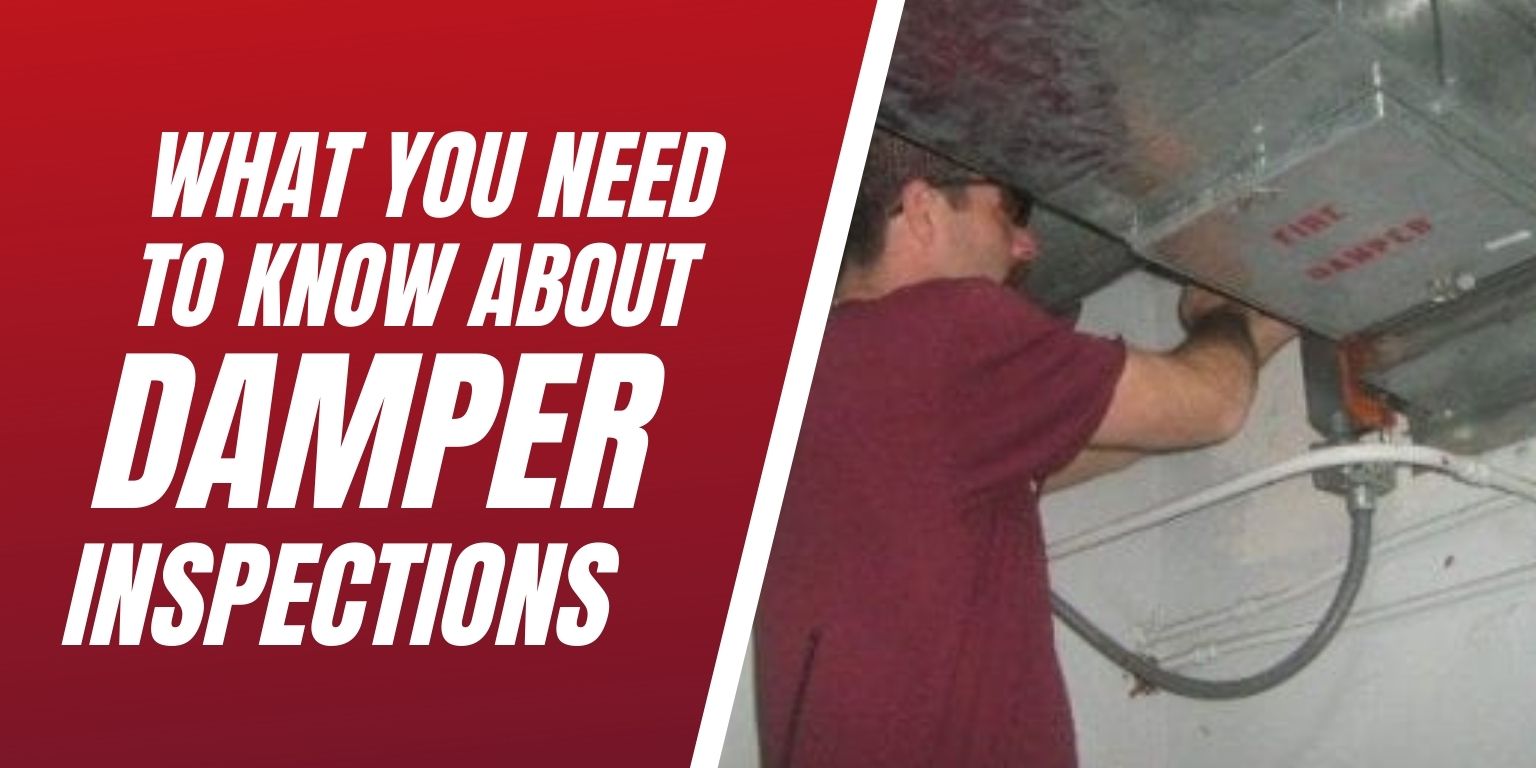
It is not uncommon for dampers to go without inspection due to being placed within the ductwork and being forgotten about unintentionally. A building’s fire protection system in the event of a fire emergency relies heavily on fire and smoke dampers to perform.
Fire and smoke spread fast and one of the easiest ways for a fire to quickly take over a building is through the ventilation system. Hence why fire, smoke and combination (fire and smoke) dampers are specifically designed and installed in the ductwork to help contain the fire to its original origin.
How Fire and Smoke Dampers Work
Fire dampers work when the heat from the fire causes the normal temperature of a room to rise to about 165 degrees Fahrenheit. The heat causes the fusible link, which is holding the damper open, to melt and allows the damper to close.
Smoke dampers on the other hand are typically operated by a smoke detector, which would also be located in the duct. Once smoke has been detected, the smoke detector sends a signal to the damper actuator, which uses the jackshaft and linkage to open and close the blades of the smoke damper.
Combination dampers, both a fire and a smoke damper in one, are used in areas of the ductwork where both fire and smoke barriers are located to prevent the spread of fire and smoke.
Damper Inspection Code
LSS technicians will assist you in keeping your facility in compliance with all local and state building codes. The National Fire Protection Association (NFPA) and the International Building and Fire Codes require regular maintenance of fire and smoke dampers. Authorities Having Jurisdiction (AHJ’s) such as the Joint Commission, fire marshals and insurance risk auditors enforce these requirements.
Fire Damper - NFPA 80 – Section 19.4
Each damper shall be tested and inspected one year after installation.
The test and inspection frequency shall then be every 4 years, except in hospitals, where the frequency shall be 6 years.
Smoke Damper - NFPA 105 – Section 6.5
Each damper shall be tested and inspected one year after installation.
The test and inspection frequency shall then be every 4 years, except in hospitals, where the frequency shall be 6 years.
Damper Inspection Preparation
- Confirm Damper Inspection Due Date
The National Fire Protection Association (NFPA) requires facilities to have a damper inspection every 4 years, except healthcare facilities, where inspection is required every 6 years. However, if the building is new or recently undergone renovations, dampers should be inspected and tested one year after installation. Knowing when your next inspection is due can help you avoid any citations or penalties.
- Locate the Damper Service Report from the last Inspection
The Damper inspection report will list how many fire, smoke, and combination dampers are in the facility, and which ones, if any, should have been repaired following the last inspection.
- Provide Facility Life Safety Maps
Life Safety maps will help the inspection process go quickly without a hitch. The Life Safety maps are drawings of the facility’s fire and life safety protection systems. Providing these maps to the inspector will allow for the job to be completed in a timely manner as it will provide direction of where each damper is located within the facility.
- Schedule Inspection in Advance
Scheduling your damper inspection in advance will help ensure that you will have a set date and time. Making sure that you have a set date and time out of your schedule will guarantee that your inspection will be done in time.
Dampers serve as an important role within a facility fire protection system. Designed to contain and prevent the spread of fire and smoke throughout the ductwork. To ensure compliance and functionality, fire and smoke dampers need to be properly inspected and tested regularly as they have a tendency to fail. Contact our team today to schedule your facility fire and smoke damper inspection.

